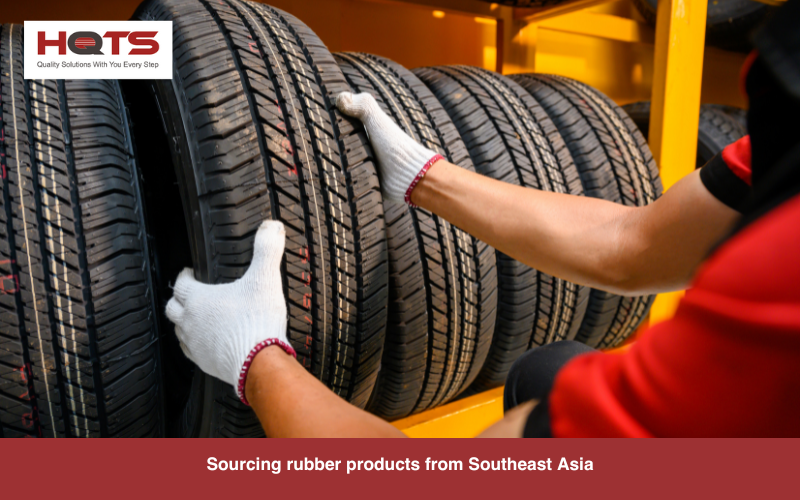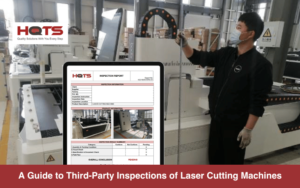Rubber and products made from rubber have become prevalent in our daily life around the world. When it comes to manufacturing rubber products, one region that has become the international export hub is Southeast Asia. This article will explain why sourcing rubber products in Southeast Asia is an ideal option.
Why is Southeast Asia an ideal destination for sourcing rubber products?
Southeast Asia, renowned as a prominent rubber producer and exporter, benefits from favorable cultivation conditions, including a suitable climate, fertile soil, and ample rainfall, making it an ideal hub for rubber plantations. Here are some reasons why Southeast Asia is an excellent source for rubber and its products:
- Extensive production: This region, particularly Thailand, Indonesia, Malaysia, and Vietnam, holds a significant global share in rubber production. With vast rubber plantations and well-established supply chains, these countries ensure a constant and abundant rubber supply.
- Distinguished quality and diversity: Southeast Asian rubber stands out for its consistent quality, versatility, and renown. The region offers diverse types of rubber, including natural (from rubber trees) and synthetic variants, catering to specific buyer requirements.
- Competitive pricing: Southeast Asia’s intense competition among rubber producers, coupled with substantial production volume, leads to competitive pricing for rubber and related goods. Favorable economies of scale and lower production costs grant buyers cost advantages.
- Robust infrastructure: Southeast Asian nations boast well-developed infrastructure and logistics networks, facilitating efficient transportation and export of rubber and its products. This ensures punctual and dependable deliveries to global markets.
- Industry expertise: With a rich history and profound expertise in rubber cultivation, processing, and manufacturing, Southeast Asian countries exhibit remarkable competence. The region benefits from a skilled workforce and advanced technology, enabling the extraction, processing, and production of high-quality rubber goods.
- Sustainable practices: Numerous rubber producers in Southeast Asia prioritize sustainability, employing environmentally friendly methods in cultivation and processing. Responsible land management, water conservation, and adherence to international sustainability standards, such as the Sustainable Natural Rubber Initiative (SNR-i), showcase their commitment.
- Accessible markets: Southeast Asia enjoys well-established trade relationships and export channels for rubber and its products. The region holds a prominent global presence and serves as a major supplier to various industries, including automotive, tire manufacturing, construction, and consumer goods.
What are the popular rubber products exported from Southeast Asia?
Southeast Asia exports a variety of rubber products, including:
- Natural rubber sheets: These widely exported products are made by processing and drying natural rubber latex into flat sheets which are used for automotive components, industrial parts, footwear, and rubber gloves.
- Rubber gloves: Malaysia and Thailand, particularly known for their significant production and export, supply rubber gloves crucial in industries like healthcare, food processing, and manufacturing, ensuring protection and hygiene.
- Rubber footwear: Southeast Asia’s production of rubber footwear, including flip-flops, sandals, and rubber boots, enjoys global popularity due to its durability, comfort, and affordability.
- Rubber hoses: Chemical-resistant rubber hoses are used across industries such as automotive, construction, and agriculture, facilitating the conveyance of fluids and gases.
- Rubber seals and gaskets: These commonly exported products play a vital role in automotive, machinery, and industrial applications, providing sealing and insulation properties to ensure efficient machinery and equipment functioning.
- Rubber mats and flooring: Rubber mats and flooring products exported from Southeast Asia find application in commercial, industrial, and residential settings like gymnasiums, playgrounds, and high-traffic areas.
- Rubber components for the automotive industry: Southeast Asian countries hold key supplier positions for rubber components in the automotive sector, such as tires, seals, bushings, engine mounts, and vibration isolators.
Typical quality inspections for rubber products include:
- Visual examination: Inspecting the rubber product’s physical appearance to identify defects, discoloration, surface irregularities, or damage, ensuring it meets desired visual standards.
- Dimension verification: Checking the rubber product’s measurements and dimensions to ensure they align with specified tolerances and requirements, maintaining consistency and accuracy in size and shape.
- Durometer hardness testing: Measuring the rubber product’s hardness using a durometer to ensure it falls within acceptable range according to its intended use.
- Tensile strength assessment: Testing the rubber product’s resistance to tension to evaluate its strength and elasticity, ensuring it can withstand intended applications without failure.
- Compression resilience evaluation: Assessing the rubber product’s ability to regain its original shape after compression, determining its capacity to rebound and maintain form over a specific period.
- Accelerated aging and durability analysis: Simulating the rubber product’s lifespan under accelerated conditions to assess its resistance to aging, degradation, and durability.
- Chemical resistance examination: Evaluating the rubber product’s capability to withstand exposure to specific chemicals, oils, or substances without degradation or performance loss.
- Adhesion strength testing: Assessing the strength of the bond between the rubber product and other materials or surfaces it adheres to, ensuring compliance with required standards.
- Performance assessment: Testing the rubber product’s performance characteristics under real-world conditions, including flexibility, friction, abrasion resistance, heat resistance, electrical conductivity, and other relevant properties.
- Packaging and labeling scrutiny: Inspecting the rubber product’s packaging and labels to ensure suitable materials for protection during transportation and storage, verifying accurate labeling with product identification, specifications, and safety warnings.
How to conduct quality assurance for your rubber products
Not many companies and manufacturers have enough capabilities to cover all necessary inspection activities due to the lack of manpower, expertise, and experience. Thus, a third-party quality control service provider is an ideal option to balance between quality, expense, and convenience. A professional inspection service provider like HQTS can offer comprehensive services for inspection, as well as factory audit and ESG services to ensure you select the best suppliers.
If you have any concerns about the quality of your rubber products, contact us today for consultancy.





